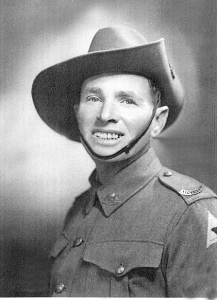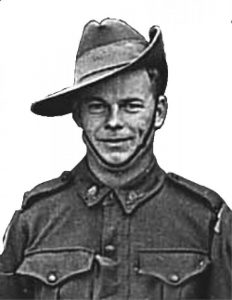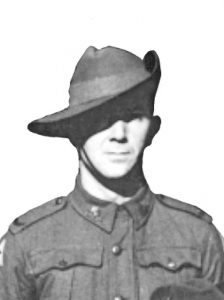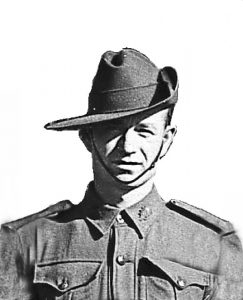Tanbaya, Thanbaya, Thanbaya Hospital, 50 Kilo - Burma

Tanbaya, 50 Kilo Camp – Burma
Tanbaya was originally an ‘A’ Force Burma Camp located next to the railway that had been allowed to fall into a bad state of disrepair. In time, despite the lack of tools, it was converted into a hospital of eleven wards, each dedicated to specific illnesses.
‘F’ Force Hospital Camp.
In late June 1943, the Japanese decided to make Tanbaya a Hospital camp for the increasing numbers of sick POWs. The hospital camp was to accommodate 1700 ‘F’ Force POWs considered too sick to work for two months – with Dr. Bruce Hunt to command.
With the sick far exceeding 1700, the selection of patients was extremely difficult. It was hopeless sending men too ill to survive the journey and on the other hand many men would die if left in work camps.
What terrible choices for medical staff.
On 1st August an advance party including Bruce Hunt left for Tanbaya followed by the first batch of sick leaving on 25 August. Their journey was unduly long (as it always was with Japanese organising) and arduous with 43 of 1700 men dying with conditions at staging camps chaotic with sick laying on the road for hours waiting for transport. Without bedding/straw on the floors of lorries and railway trucks travel much have been excruciating for so many.
Patients began to arrive from Thailand on 8 August and continued to do until 7 September. Their journeys were sheer cruelty. Owing to the railway being damaged, some men had to walk two kilometres even though they were suffering from tropical ulcers. Those travelling by train and motor transport were herded into crowded closed or open trucks. Deaths en route were not infrequent.
‘guards jabbed ulcerated wounds to make the sick “speedo” in their climb onto transport. The weakened men were stoned to “speedo” out of the transport on reaching a destination’
Tanbaya camp itself was dismal – huts, no water or lights. Negligible medical supplies and at all times, rations were poor.
Patients were deficient in vitamin B and nearly all suffered beri beri and malaria was ever present with 87 deaths. Patients were segregated by their illnesses in an attempt to control disease spreading. One ward was solely to dysentery, one ward to pure dysentery and ulcers combined with dysentery. Two wards to ulcers and three wards to general medical diseases, chiefly Malaria and Beri Beri. Each ward contained in the early stages approximately 190 patients and was under control of a Wardmaster.
The Wardmaster was a combatant officer, usually of Company Commander status or above, he had as assistants; an assistant Wardmaster, usually a subaltern, 2 N. C. O’s who acted as C.S.M. and C.Q.M.S. respectively and a clerk. The Wardmaster was responsible for nominal rolls, for discipline, for hut cleanliness, for messing, for canteen supplies and in general for everything which took place in the ward except such matters as involved technical medical knowledge or skill. He had in addition, through the medical officer or senior nursing N.C.O. supervisory control over the activities of the nursing orderlies in regard to their non-technical functions.
There were a number of Combat officers who acted as Wardmasters. They included Captain George Gwynne (2/4 Machine Gun Battalion), Lieutenants Norm Dean (2/26 Battalion), Bernie Berry (2/10 Field Regiment), Ian Perry (2/1 Heavy Battery (Captured on Timor)) amongst others.
All men were required to work on Camp maintenance.
From 1 August to 24 November 750 patients died. That is about 45% death rate. Western Australian doctor, Major Hunt worked tirelessly.
There was at least one confirmed death of a POW who hung himself after he had both legs amputated. The patient had been transferred from the ulcer ward at Shimo (Lower) Songkurai.
Tanbaya was referred to by POWs as a ‘death camp.’
Read about Dr. Bruce Hunt and the men at Tambaya 50 kilo Hospital Camp, Burma.
Leaving Tanbaya!!
The Japanese gave short notice to the camp they were leaving Tanbaya and heading to Kanchanaburi. They were closing the hospital.
The Japanese wouldn’t allow men they considered unfit to undertake the ’56 hour train journey’. In groups of 200 the first group departed Friday 19 Nov. The last train to leave at 2.30pm Wednesday 24 November with Hunt in charge of 132 men the hospital was emptied as patients were moved to Kanchanaburi. As the prisoners travelled in closed and open trucks, the journey, lasting from 72 to 132 hours, with long halts en route, was as uncomfortable as all previous train journeys experienced by the POWs.
The sickest men, about 300 men were left behind with Dr. Price in charge with one Australian and one British doctor to assist. Up until this time 665 patients had died at Tanbaya – 45% British and 21% Australian. Hunt reported that ‘Deaths in the main were attributable to dysentery both amoebic and bacillary, tropical ulcers, beri beri and malaria. Under nutrition and lack essential vitamins very greatly increased the mortality rate from these diseases.’
The total number of deaths at Thanbaya, including those who were dead on arrival, was 665, representing about 45 per cent British and 21 per cent Australians.
As the train headed up the steep grade into the mountains two engines were required. A puller and a pusher. It was estimated the average speed was 3 m.p.h they passed through Three Pagoda Pass and crossed the bridge at Sonkurai where the POWs had erected a cross where more than 1,000 men had died. Onto Niekhe where two rice wagons were added and guards pushed coolies, women & children into the wagons, about 75 crammed into each and the doors sealed.
The train journey from Tanbaya to Kanchanaburi (Tamarkan) took three days!
At Tamarkan the walking sick from Tanbaya got off the train as best they could. The stretcher cases were laid on the platform. The walking sick and ‘gondoliers’ – the men who supported themselves on bamboo or hardwood sticks, formed up to march the few kilometres to Tamarkan Camp – currently a transit Camp.
Men of 2/4th who died at Tanbaya Hospital camp included:
WX9131 Goodwin, Reuben
‘F’ Force d. 6 Nov 1943 with beri beri and dysentery aged 27 years (former Fairbridge Farm Schoolboy) probably evacuated from Kami Sonkurai.
WX7801 Hackshaw, Albert 
was with ‘B’ Company, No 9 Platoon. ‘F’ Force died 2 Nov 1943 of tropical ulcers aged 43 years at Tanbaya Hospital, probably evacuated from Kami Sonkurai.
Hackshaw formerly farmed at Bencubbin.
WX9320 Heal, Herbert William

‘F’ Force died 22 Dec 1943 beri beri and dysentery aged 33 years Tanbaya, probably evacuated from Kami Sonkurai.
WX9849 McIntosh, Archibald James L. ‘F’ Force died 10 Nov 1943 of beri beri and dysentery aged 23 years. Photo Below Left.


WX9143 SMITH, Montaque Joseph died 13 November 1943 of dysentery and tropical ulcers aged 27 years. (his photo above Right)
WX8699 Thackrah, Cyril Bernard 

